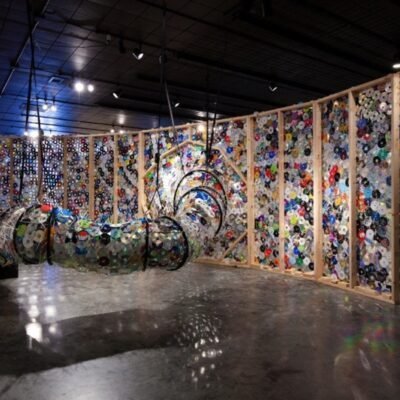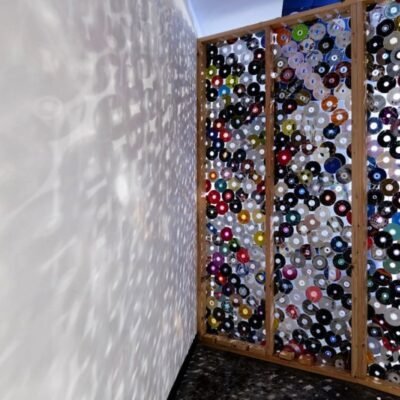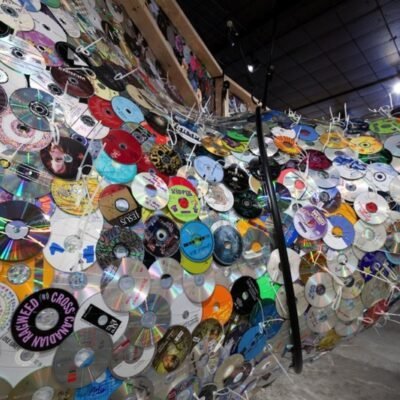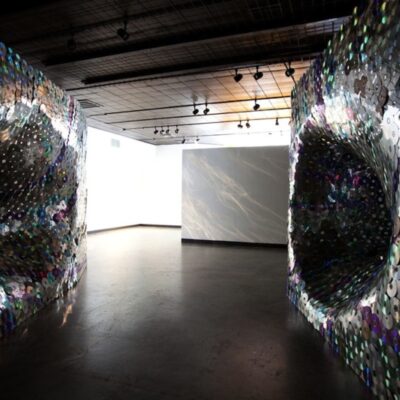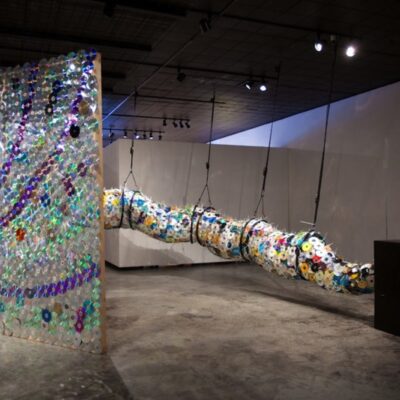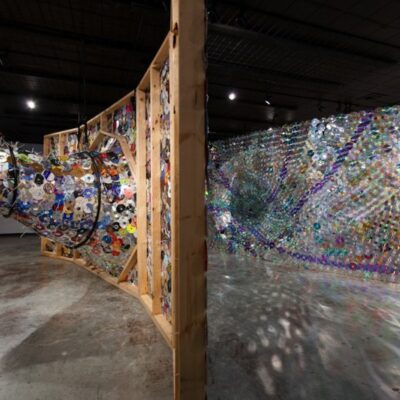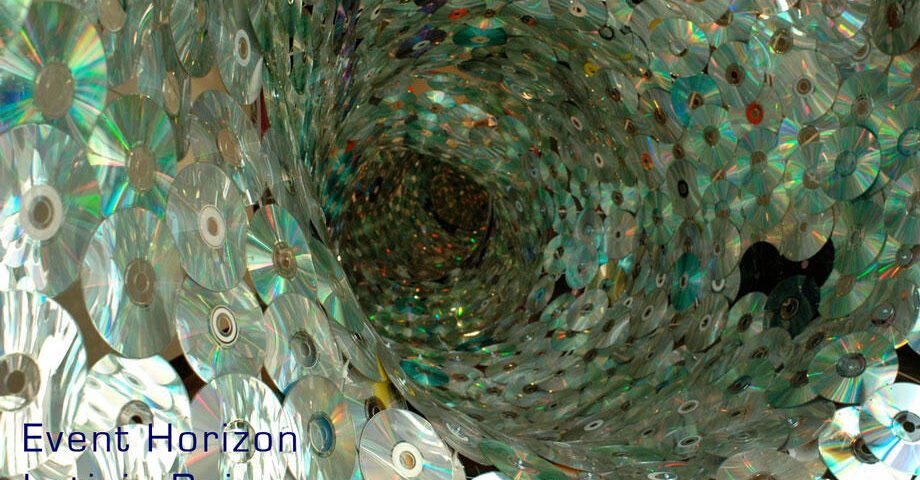

Leticia Bajuyo
In the dustbin of technology, what happens to player piano rolls, vinyl, cassettes, and CDs when the companion machine is broken, missing, or forgotten? The originally intended experience of information is lost, but the memory and nostalgia live on. In Event Horizon, Leticia Bajuyo combines cable ties, hula hoops, and thousands of CDs into a large site-specific horned sculpture. Reflecting our transient consumer values back to us, Bajuyo creates a cornucopia of whim, desire, and purchasing trends, transforming yesterday’s media hits and today’s detritus into a disco vortex, a material and technological Event Horizon.
Special Thanks to End of an Ear and Half Price Books for donating CDs to this project!
The evolution of technology and its machines produces an insatiable appetite for the next shinier, faster, easier mode of experience. Thus, the desire to acquire and to satisfy this appetite becomes a machine of desire that desires a machine. Each new generation in the history of automated devices for recording sound, communicating thoughts, or reproducing experience, was once the “next best thing” that everyone wanted, but societal desires have moved on to newer, shinier machines.
This exhibition Event Horizon builds on her previous works Entropy and Rewind. Both are site-sensitive installations constructed of thousands of donated CDs. These discs were at one time useful, functional, desirable objects. Rather than letting the discs end up in landfills or continue to sit unused on a shelf, Bajuyo collects these discs of digital memory and combines them into a shiny fabric that can become walls, vortices, and horns in her installations.
Although the CD is still a functional medium for holding information, CDs are becoming increasingly passé. But when combined into a quilt of digital memory in the shape of a victrola horn, the texture and scale of the visual result offers an alternative experience of desire; an experience that thrives on the traces left by what once had been “the next best thing”, creating new memories that fall outside technological economies of desire and acknowledging the overlooked complexity of, for example, buying next month’s new cellphone.
Entropy was inspired by science—for “entropy” is the unavailable energy that is unable to do work in systems. Entropic energy never decreases. The installation of Entropy is focused on the CD as unwanted information that is being sucked into an endless vortex. In Entropy, the opening of the vortex faces the entrance of the gallery. The vortex is made of the shiny side of the discs that hold information. The other side of the vortex reveals how the form is made and displays the text information on each CD such as band names and software titles.
In Rewind, Bajuyo more directly explores how the evolution of technology produces an insatiable appetite for the next shinier, faster, easier mode of experience. Thus, the desire to acquire, to fill this appetite, becomes a machine of desire that desires a machine. Each new generation on the timeline of automated devices for recording sound, communicating thoughts, reproducing experience, is evidence of an overarching machine of desire that works well; possibly too well since it is continually manufacturing more desire.
Women & Their Work is a Partner of the Visual Artists Network (VAN). This project is made possible in part through support from the Visual Artists Network Exhibition residency, which is a program of the National Performance Network. Major contributors are the Andy Warhol Foundation for the Visual Arts, the Joan Mitchell Foundation, the Ford Foundation and the Nathan Cummings Foundation.
For more information: www.npnweb.org
